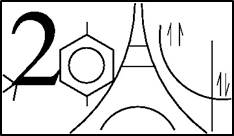Starting from their introduction in 1973 by J.L. Rivail [1] and collaborators, the Quantum Mechanical continuum solvation models (QM/CSM) has become very useful methods for the description of molecular properties and processes in solution and other condensed phases. One the most popular QM/CSM is the Polarizable Continuum Model, which has been proposed in1981 by Miertus, Scrocco and Tomasi [2], and which since then has been continuously developed under the constant inspiration of Prof. J. Tomasi. [3-6]. Further developments of PCM are still in progress to extend its range of applications. In this communication, we will focus on three of these recent developments:
1) The Virial Theorem for molecular solutes
2) The general form of radiation-molecular solute Hamiltonian interaction
3) The effects of high pressure on the vibrational frequencies of molecules
The first two topics regard aspects of the Quantum Mechanics of molecular solutes whose formulation has been elusive until now.
The third topic regards the description of the high pressure effects on vibrational properties. As an example of these effects, we will present the case of the vibrational frequencies of fullerenes C60 and C70.
[1] Rinaldi, D., Rivail, J-L, Theor. Chim. Acta 32, 57 (1973)
[2] Miertus, S., Scrocco, E., Tomasi, J., Chem. Phys. 55,117 (1981)
[3] Tomasi, J., Persico, M., Chem. Rev., 94, 2027 (1994)
[4] Amovilli, C., Barone, V., Cammi., Cances, E., Cossi, M., Mennucci, B., Pomelli, C.S., Tomasi, J.,
Adv. Quantum Chem., 32, 227 (1999)
[5] Tomasi, J. Mennucci, B., Cammi, R., Chem. Rev. 105, 2999 (2005)
[6] Tomasi, J., Wire-Comp. Mol. Science, 1, 855 (2011)
|
|
|
Planning > Contributions par auteur > Roberto CammiOn some recent advances in the QM description of molecular solutes using the Polarizable Continuum Model: virial theorem, radiation-solute interaction, effects of high pressure
1 : Department of Chemistry, University of Parma
(UniPr)
|
| Personnes connectées : 1 | Flux RSS |

|

 PDF version
PDF version